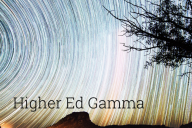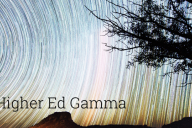You have /5 articles left.
Sign up for a free account or log in.
Many of Western society’s urtexts treat curiosity as a sinful transgression and a threat to social order and divine authority.
Consider Adam and Eve, who eat the forbidden fruit to gain knowledge and whom God then expels from the Garden of Eden. Or Prometheus, who stole fire from the gods and who, in consequence, was chained to a rock and tortured for eternity. Or Pandora, who opens a box out of curiosity and releases evil into the world. Or Icarus, who fails to heed his father’s warnings and flies too close to the sun. Or Doctor Faustus, who sells his soul to the demon Mephistopheles in return for worldly knowledge, pleasure and power.
Yet, by the Renaissance, the age of discovery and the era of the enlightenment, curiosity had been redefined as a vital catalyst for human progress and innovation. If curiosity could be a threat—if curiosity could kill the cat—it could also drive scientific discovery, exploration and the expansion of human knowledge.
Curiosity became associated with empirical investigation, science, critical thinking and the pursuit of knowledge for its own sake. Once considered a menace, curiosity was now the force that challenged conformity, tradition and established doctrines.
A number of recent books examine curiosity’s transvaluation. These include Justin Stagl’s A History of Curiosity, which traces the rise of travel as a self-conscious form of anthropological and social research after 1550; Alberto Manguel’s Curiosity, which focuses on a series of thinkers, scientists and artists who demonstrated in a fresh ways how to ask, “Why?”; Barbara M. Benedict’s Curiosity: A Cultural History of Early Modern Inquiry, which explores the shift in the value of curiosity in early modern Europe; and Philip Ball’s Curiosity: How Science Became Interested in Everything, which describes the liberation—and subsequent professionalization—of curiosity and how this impulse linked to magic, religion, literature, travel, trade and empire.
Then, there’s Wonders and the Order of Nature by Lorraine Daston and Katharine Park, which examines how, after 1100, “wonder and wonders fortified princely power, rewove the texture of scientific experience and shaped the sensibility of intellectuals”; Science and the Secrets of Nature by William Eamon, which examines how medieval alchemists, magicians and artisans gave birth to modern science; The History of Magic and Experimental Science, Volume 1, by Lynn Thorndike, which traces the links between Christian thought and the occult arts and sciences, superstitions and folklore; Age of Wonder by Richard Holmes, which recounts how the Romantics discovered the beauty and terror of science; and The Rosicrucian Enlightenment by Frances Yates, which uncovers role that the occult has played in the formation of modern science and medicine.
A number of leading psychologists have argued that curiosity is an innate human drive, like hunger and thirst, and is a key to motivation, learning and sociability. But it is also a quality that too few educators cultivate and exploit in their teaching.
William James considered curiosity an instinct, essential for survival, driving individuals to explore their environment and learn new things.
The mid-20th-century psychologist Daniel Berlyne viewed curiosity as a response to novelty, complexity, uncertainty and conflict, which trigger exploratory behavior because they disrupt the individual’s cognitive equilibrium, prompting a need to resolve the imbalance. He also thought that curiosity was driven by the need to achieve an optimal level of arousal, which leads individuals to seek out new and stimulating experiences. Berlyne distinguished between different forms of curiosity-driven behavior: There was divisive exploration motivated by boredom and the desire for novel stimuli; specific exploration, driven by the need to resolve uncertainty or gain specific information; and epistemic curiosity, the desire to seek out information, learn and solve problems.
George Loewenstein’s “information gap” theory held that curiosity is an intrinsic motivator that arises when there is a gap between what we know and what we want to know. This “curiosity gap” creates a feeling of deprivation that individuals seek to close by acquiring new information.
Paul J. Silvia emphasized the role of emotions in motivating curiosity. Interest curiosity is driven by a desire for new and intriguing activities, while deprivation sensitivity is motivated by a desire to find specific information to alleviate feelings of uncertainty or ignorance. Curiosity, he argues, plays a crucial role in fostering creative thinking and innovation, leading individuals to explore new ideas, environments and experiences, which can spark creative insights and novel solutions to problems.
The developmental psychologist Susan Engel emphasized curiosity’s role in learning and in social, cognitive and emotional growth. She posits that curiosity is a natural instinct in children, driving them to explore, ask questions and seek new experiences. This intrinsic motivation is crucial for cognitive development and learning. She emphasizes the role of the environment and educational practices in nurturing or stifling curiosity, arguing that an environment rich in stimuli, opportunities for exploration and supportive interactions can foster curiosity, while a restrictive environment can diminish it. She concludes that the most effective pedagogies enhance curiosity by encouraging inquiry, questioning, experimentation and discovery.
Todd B. Kashdan, a psychologist and happiness researcher, has explored the role of curiosity in enhancing well-being, personal growth and social relationships. He argues that people who regularly experience curiosity tend to have higher levels of life satisfaction because they engage more deeply with the world around them. Curiosity also drives individuals to explore, learn and acquire new knowledge, contributing to personal, intellectual and social development and helping them become more resilient and adaptable in the face of challenges and changes.
Janet Metcalfe’s research has shown that curiosity can significantly enhance learning and memory retention. A leading authority on metacognition and the science of learning, she has shown that when individuals are curious about a topic, they are more likely to remember related information. This effect is due to the heightened state of arousal and motivation that curiosity induces, leading to better encoding of information in memory. Curiosity not only leads to the acquisition of new information but also fosters deeper engagement with the material, leading to a more profound understanding.
Metcalfe has also explored the relationship between metacognition and curiosity. She has demonstrated that individuals who are aware of their knowledge gaps are more likely to experience curiosity. This awareness drives them to seek out information to fill those gaps, enhancing learning and comprehension. One of her key findings is that uncertainty plays a critical role in stimulating curiosity. When individuals encounter uncertain or ambiguous situations, their curiosity is piqued, prompting them to seek clarity and understanding. This drive to resolve uncertainty is a fundamental aspect of curiosity-driven learning.
Curiosity enhances social interactions and builds strong relationships by encouraging people to ask questions, show interest in others and engage in meaningful conversations. In educational settings, curiosity can lead to greater engagement and academic achievement as students are motivated to learn not just for grades but out of genuine interest.
The Faust legend—a pact with the devil in exchange for power and knowledge—is among the most influential tropes about curiosity. A cornerstone of Western culture, this legend pervades European and American art, literature and music. In a new book entitled The Devil’s Contract, the Carnegie Mellon cultural essayist Ed Simon recounts many examples of Faustian bargains with Satan:
- The three temptations of Christ: After fasting for 40 days and nights in the desert, Jesus is tested three times by the devil. First, Satan challenges Jesus to prove his divinity by turning stones into bread to satisfy his hunger. Jesus replies by quoting Deuteronomy 8:3, “Man shall not live by bread alone,” emphasizing spiritual nourishment over physical sustenance. Second, the devil urges Jesus to throw himself down from the pinnacle of the temple in Jerusalem, to test whether God will protect him. Jesus replies with Deuteronomy 6:16, “You shall not put the Lord your God to the test.” Third, Satan offers Jesus all the world’s kingdoms if he will bow down and worship him. Jesus responds by quoting Deuteronomy 6:13, “You shall worship the Lord your God and him only shall you serve.”
- Goethe’s Faust: Like Christopher Marlowe’s Doctor Faustus, Goethe tells the story a man who sells his soul to the devil in exchange for knowledge and power. But unlike Marlowe’s play, Goethe’s novel does not end with eternal damnation or a moral lesson about the dangers of overreaching ambition and the consequences of forsaking divine grace. Goethe’s Faust is ultimately redeemed. Despite his human flaws, Goethe’s Faust, through striving and seeking, achieves salvation. Indeed, Mephistopheles ultimately aids in Faust’s salvation, challenging the simplistic moral binaries that pits the human quest for knowledge against faith and humility.
- The arrest and imprisonment of Christ in Dostoyevsky’s The Brothers Karamazov: The grand inquisitor accuses Christ of burdening humanity with the gift of free will, which can only lead to suffering, since people only desire, not freedom, but security, miracles and authority.
- Robert Johnson’s bargain with the devil: According to legend, the great blues musician took his guitar to a crossroads at midnight. In exchange for his soul, the devil tuned Johnson’s guitar, granting him mastery over the instrument.
- Thomas Mann’s Doctor Faustus: A 1947 novel that traces the life of a fictional composer, Adrian Leverkühn, who makes a pact with the devil, sacrificing his soul for 24 years of unparalleled artistic creativity. Mann explores the existential and psychological costs of the composer’s ambition and his descent into madness and isolation, which reflects Germany’s moral and cultural decline leading up to World War II. The novel questions whether the pursuit of knowledge and art can justify moral transgressions.
Simon’s overarching theme is that Western society, from the Renaissance onward, has succumbed repeatedly to the devil’s temptation: to exchange our higher values for our selfish ambitions—whether we are thinking of Homer Simpson selling his soul for a doughnut; or the husband, in Rosemary’s Baby, allowing Satan to rape his wife for success as an actor; or sacrificing the planet’s well-being for short-term gains.
As the critic Michael Dirda puts this: the devil’s bargain is “the animating spirit of modernity,” which rests on “the heartless utilitarian principle that ‘sees both nature and other people as tools in the furthering of the individual’s own desires.’”
Are today’s colleges fostering a culture of curiosity? I don’t think so.
- Do our most common pedagogies—lectures and instructor-driven discussions—prioritize inquiry, exploration and creativity? No.
- Do siloed academic departments encourage students to see connections between various fields of knowledge. Nope.
- Do most classes offer diverse perspectives and ignite curiosity about different cultures, ideas and histories? Not really.
- Do we give most students opportunities to engage in research or hands-on, curiosity-driven learning? Sadly, not.
Instead, most students juggle heavy course loads with work and other responsibilities, leaving little time for intellectual exploration outside of required coursework. At the same time, many courses focus on surface-level content delivery rather than inquiry, critical thinking and analysis, which are essential for fostering curiosity.
Especially in large classes, students have very limited interaction with faculty, reducing opportunities for mentorship and intellectual stimulation. Meanwhile, an increasing emphasis on vocational training and job readiness overshadows the broader educational goals of fostering curiosity and a love for learning.
Colleges can support student curiosity by creating an environment that encourages exploration, critical thinking and a passion for learning. Here’s how:
- Promote inquiry-based learning: Have students conduct investigations and develop solutions and make them active participants in their own learning.
- Organize classes around provocative topics and clashing perspectives: Include debates, discussions and readings that present multiple viewpoints on complex issues—approaches that challenge students’ preconceptions and encourage critical thinking.
- Break down disciplinary silos: Encourage students to apply knowledge from multiple disciplines to address complex issues.
- Incorporate active learning techniques: Project-based learning, lab work and field research give students chances to apply theoretical knowledge in real-world contexts.
- Expand opportunities for mentored research: To foster a passion for discovery, provide opportunities for students to engage in research under the guidance of faculty mentors.
- Encourage reflection and metacognition: Teaching students to reflect on their learning processes and to think about their thinking (metacognition) can help them become more self-aware and effective learners.
- Celebrate curiosity: Host events like research fairs and award ceremonies that highlight and celebrate student curiosity and exploration.
I live my life according to a series of mantras: “Education is liberation.” “Everything has a history.” “Anything worth doing is worth doing half-assed.” “We inhabit two worlds: the world of the everyday and the world of the imagination.” But perhaps the most relevant to teaching is this one: “Question everything.”
This phrase suggests an approach to thinking and learning that entails critically examining all beliefs, assumptions and received knowledge rather than accepting them at face value. This mindset encourages skepticism, inquiry and the pursuit of deeper understanding through constant questioning and exploration.
Skepticism and inquiry need to be central to higher education. Follow the example of the 17th-century philosopher René Descartes, who questioned all that could be doubted and helped lay the groundwork for modern skepticism and the scientific method.
By questioning everything, our students are empowered to seek out new knowledge and challenge existing paradigms.
The phrase “Curiosity is the wick in the candle of learning” is attributed to the 20th-century American motivational writer William Arthur Ward. However trite, this positive thinking adage speaks to a certain truth: Without curiosity, the process of learning would lack the essential spark needed to ignite and sustain it.
Curiosity is fundamental to learning. The polar opposite of dogmatism, curiosity ignites the desire to acquire knowledge, ask questions and seek answers. It motivates individuals to engage with new information and experiences and illuminates new possibilities and perspectives. It encourages inquisitiveness and exploration.
I can’t imagine a more important quality to instill in our students.



